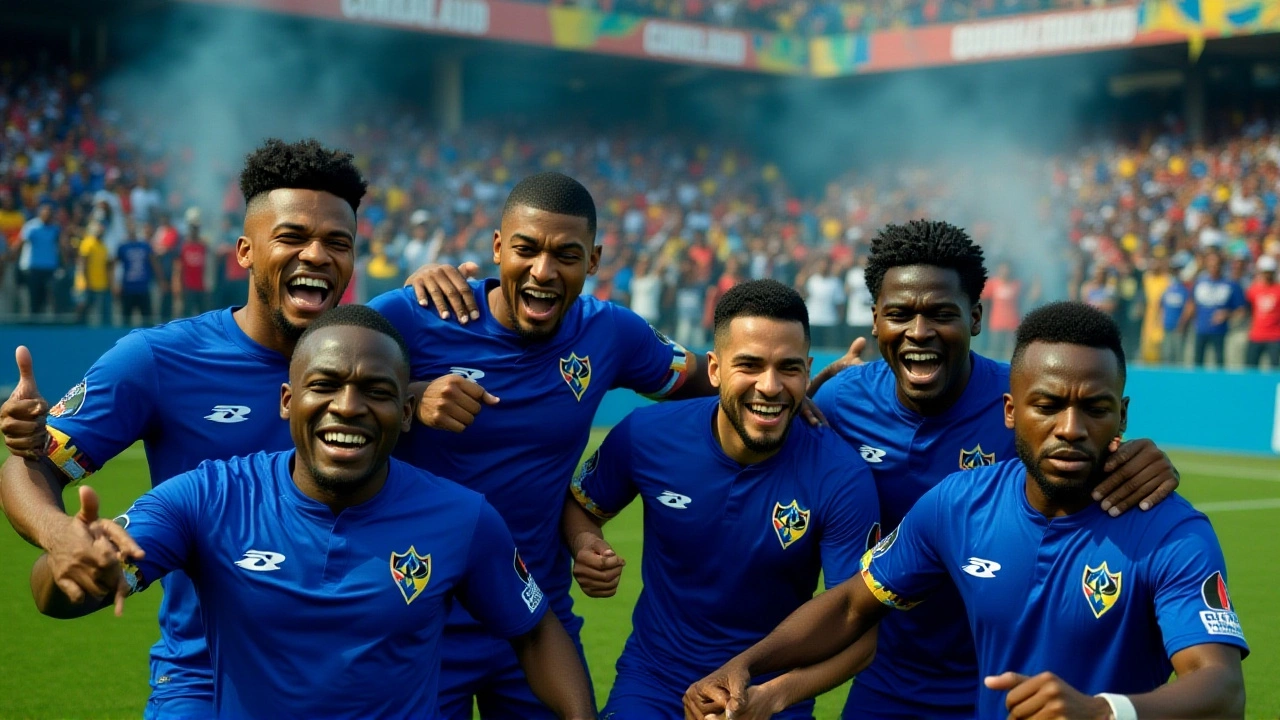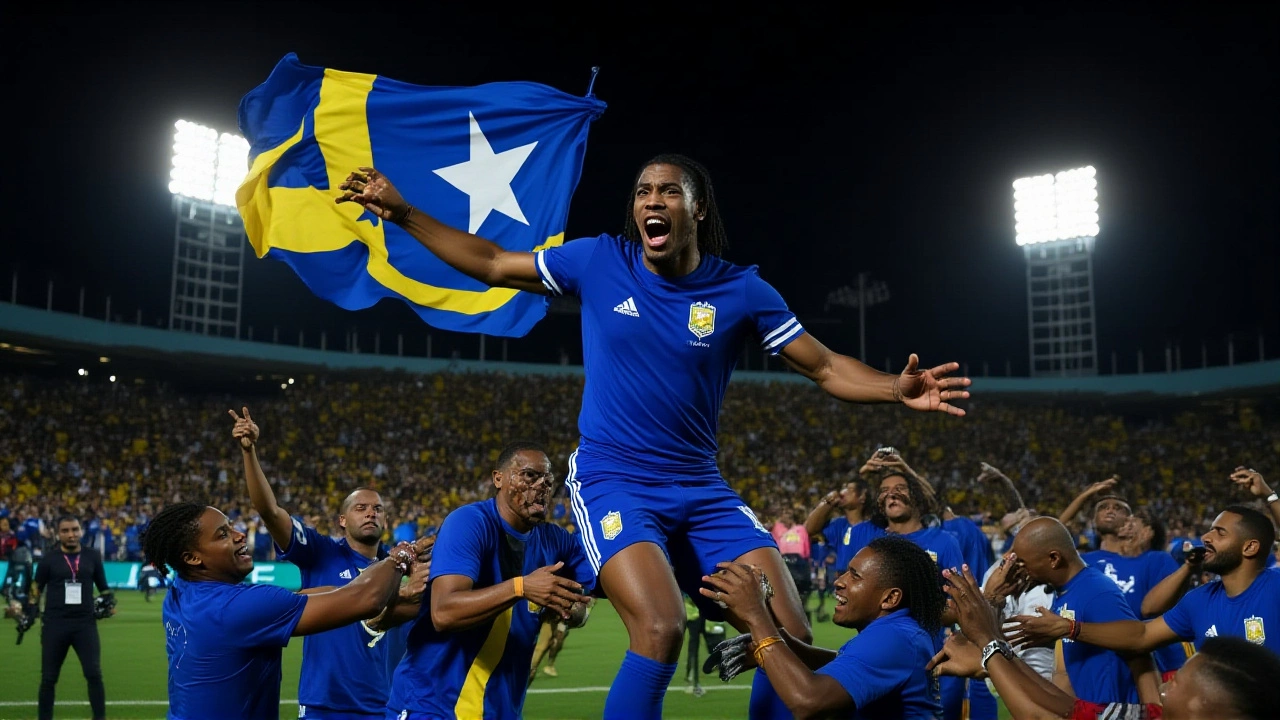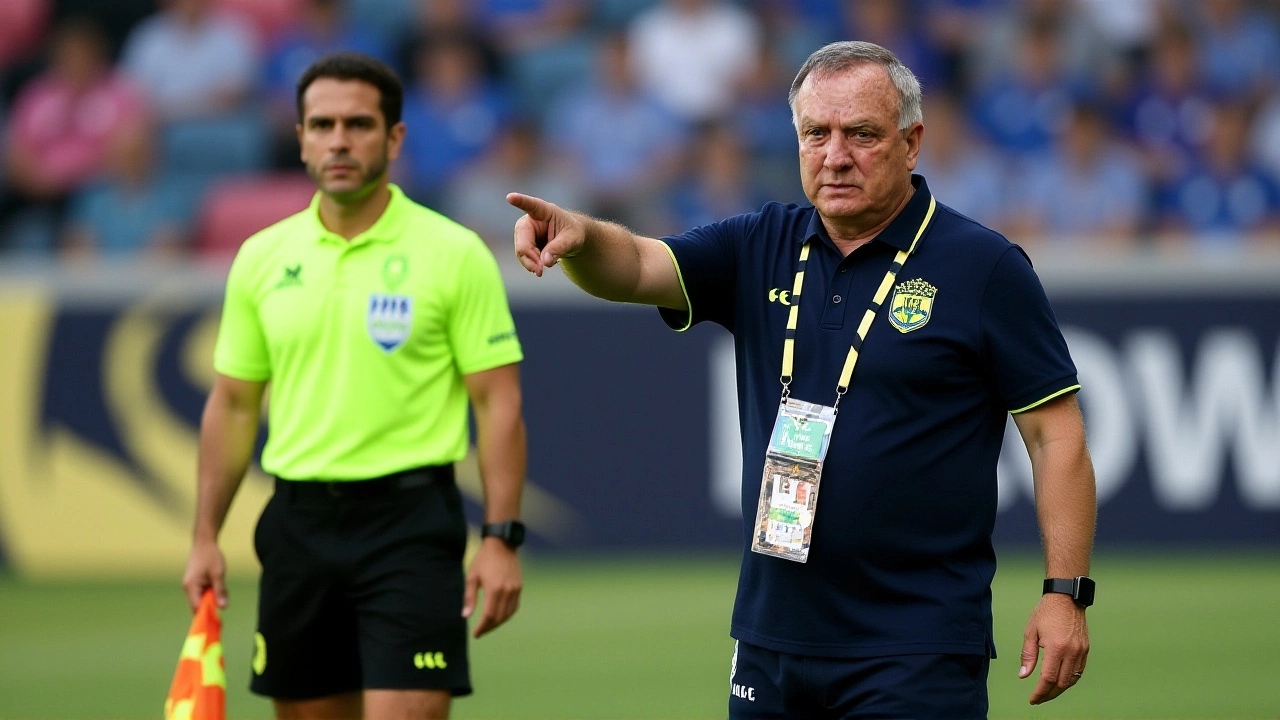
On November 19, 2025, in a rain-slicked Kingston stadium, the unthinkable happened: Curaçao, a Caribbean island with fewer people than many U.S. high schools, punched its ticket to the 2026 FIFA World CupMexico, United States, and Canada. The 1-0 win over Jamaica wasn’t just a victory — it was a seismic shift in global football. With a population of just 160,000, Curaçao became the smallest nation ever to qualify for the tournament, dwarfing even tiny nations like Iceland and San Marino in historic significance. The winning goal came from a perfectly timed header by Abyspo, set up by a slick one-two between Bakuna and Leisa. It wasn’t just skill — it was soul. "We’re small, but we’re big at heart," said an emotional team member after the final whistle, as captured in AFP footage. And for once, the cliché felt true.
A Nation That Never Stopped Believing
Curaçao didn’t arrive at this moment by accident. Before 2010, the island was part of the Netherlands Antilles, a colonial relic that dissolved amid political upheaval. Since then, Curaçao’s football federation has operated independently under the Royal Netherlands Football Association (KNVB)’s umbrella, but with full autonomy in CONCACAF. For years, they were footnotes in qualifiers — a team that rarely scored, rarely won, rarely even drew attention. But behind the scenes, youth academies in Willemstad began churning out technically gifted players. Many now play in the Dutch second tier, Belgian lower leagues, or even in MLS reserve sides. This wasn’t a lucky draw. It was decades of quiet investment.
The Match That Changed Everything
The buildup to November 19 was electric. Jamaica, ranked 18 spots higher in FIFA’s rankings, entered as favorites. Their goalkeeper, Andre Blake, a star for MLS’s Nashville SC, had made three crucial saves in the first half alone. Curaçao’s Makuna had a shot cleared off the line. Jamaica’s Nicholson rattled the crossbar. The scoreboard stayed deadlocked through 45 minutes. But in the 63rd minute, the tide turned. Bakuna received the ball near the left touchline, feinted inside, and slipped a pass to Leisa, who cut back across the box. The cross was slightly behind, but Abyspo, a 24-year-old center-back from the Dutch fourth division, leapt like a man possessed. The ball kissed his forehead — and the net. The stadium fell silent. Then, chaos.

What Happened After the Final Whistle
On the pitch, players collapsed in tears. One climbed the advertising board and held up a homemade sign: "160,000 hearts. One dream." In Willemstad, streets emptied as people danced in the streets, horns blaring. Social media exploded. The CONCACAF match video hit 152,000 views in 24 hours. A comment from Ukraine — "Congratulations from Ukraine, nice to see them in World Cup" — stood out among 288 others. It wasn’t just football fans. It was people who see themselves in underdogs. The Curaçao Football Federation received over 3,000 emails from diaspora communities in the Netherlands, the U.S., and Aruba offering support. "This isn’t just about us," said interim coach Randy Stroobants in a post-match press conference. "It’s about every kid in the Caribbean who’s told they’re too small to dream big. We proved they’re not."
The Bigger Picture: Football’s New Frontier
Curaçao joins Cape Verde, Jordan, and Uzbekistan as first-time World Cup qualifiers for 2026 — all nations that broke through against long odds. But none had the population of Curaçao. For context: the island’s population is smaller than that of the city of Grand Rapids, Michigan. Their per-capita GDP is one-fifth of Jamaica’s. Yet they outworked, outplayed, and outlasted a team with a professional league and a national stadium that seats 30,000. This isn’t just a win for football. It’s a win for equity in sport. FIFA’s own financial aid programs for smaller federations — like the $1.2 million in development grants Curaçao received between 2020 and 2024 — paid off. The blueprint is clear: invest in youth, trust local coaches, and never underestimate heart.

What Comes Next?
The official draw for the 2026 World Cup group stage is set for January 2026 in Los Angeles. Curaçao will be placed in Pot 4, alongside other debutants and minnows. They’ll likely face heavyweights like Brazil, Spain, or Germany — but that’s not the point anymore. The goal now isn’t just to compete. It’s to inspire. The team has already begun planning a pre-tournament tour across the Caribbean, playing exhibition matches in Suriname, Trinidad, and the Dominican Republic. "We’re not going to the World Cup to take photos," said Bakuna. "We’re going to show them what happens when a tiny nation refuses to stay small."
Frequently Asked Questions
How did Curaçao manage to qualify despite having such a small population?
Curaçao’s success stems from decades of grassroots investment, particularly in youth academies funded by the KNVB and CONCACAF development grants. Unlike larger nations that rely on star players, Curaçao built a system focused on technical skill, tactical discipline, and team cohesion. Many players train in the Netherlands’ lower leagues, bringing back professional experience. Their 1-0 win over Jamaica wasn’t luck — it was the result of a 15-year rebuild.
Who are the key players behind Curaçao’s historic run?
Midfielder Bakuna orchestrated the decisive goal, while defender Abyspo scored the header that sealed qualification. Forward Makuna and playmaker Leisa were instrumental in the attacking phase. Most of the squad plays in the Dutch, Belgian, or Canadian lower divisions, not Europe’s top leagues — proving talent isn’t confined to elite academies.
What does this mean for Caribbean football as a whole?
Curaçao’s qualification is a wake-up call for the entire region. It proves that with proper structure and investment, even the smallest nations can compete on the world stage. Jamaica, Haiti, and Trinidad & Tobago have long struggled to qualify, but Curaçao’s success may trigger renewed funding and youth development programs across the Caribbean. CONCACAF has already signaled plans to expand grassroots initiatives in 2026.
Why is this considered more significant than Iceland’s 2018 World Cup run?
Iceland had a population of 330,000 — more than double Curaçao’s. They also had a professional domestic league and decades of infrastructure. Curaçao, by contrast, has no professional league and relies on diaspora players. Their win wasn’t just an underdog story — it was a triumph of pure potential over systemic disadvantage. If Curaçao can do it, so can others. That’s the real legacy.
Will Curaçao have a chance to win a match in the 2026 World Cup?
It’s unlikely they’ll top their group — they’ll face giants like Brazil or Germany. But football is full of surprises. In 2002, Senegal beat France in the opener. In 2018, Iceland held Argentina to a draw. Curaçao’s defense, disciplined and compact, could frustrate bigger teams. A single point — even a draw — would be a historic milestone. Their goal isn’t to win the World Cup. It’s to make the world remember they were there.
How did fans react around the world?
Social media exploded with support. The CONCACAF YouTube video received over 288 comments from fans in Ukraine, Japan, Nigeria, and even Antarctica (yes, one came from a research station). Dutch fans, proud of their ties to Curaçao, flooded Twitter with #BlueWave. Even FIFA’s official account posted: "Size doesn’t define greatness. Heart does." For many, this wasn’t just a football moment — it was a human one.

Write a comment